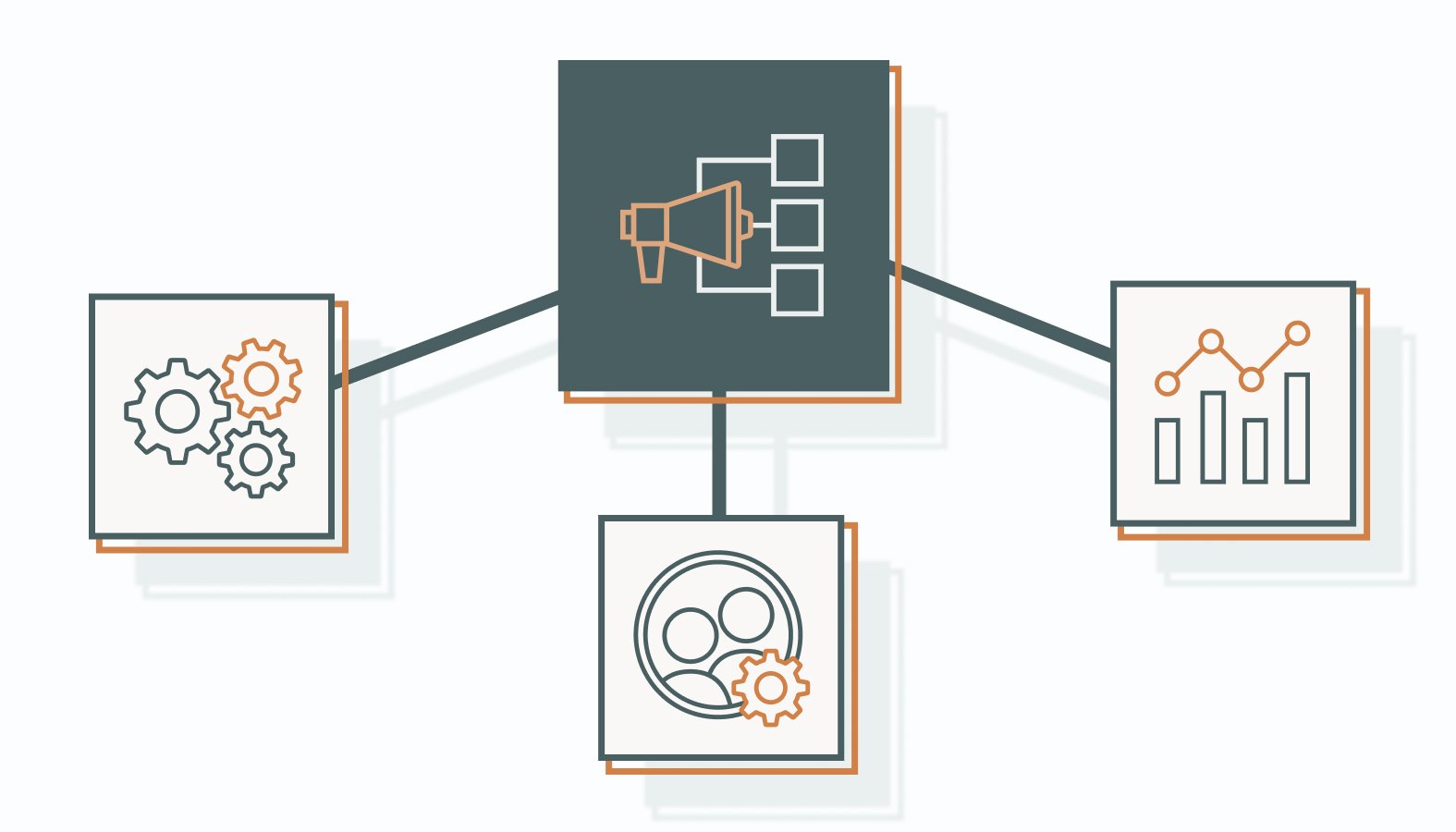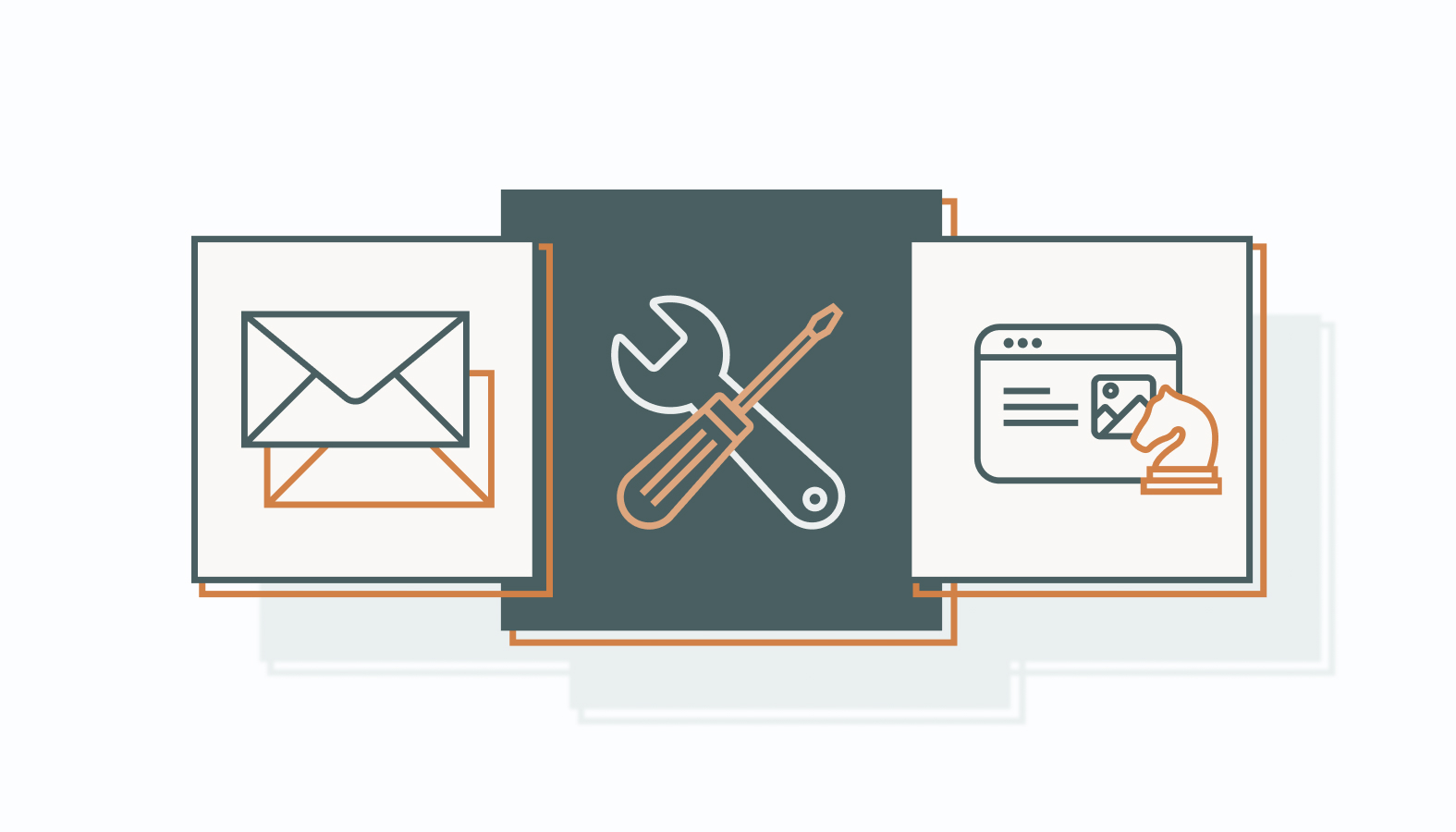Running a modern marketing team often feels like trying to drive at full speed while also building the road. Campaigns are fast, complex, and data-heavy, and without structure, they can quickly become overwhelming.
A marketing management tool brings order to the chaos. These platforms streamline campaign execution, help teams work together more effectively, and give leaders the real-time insights they need to make smarter moves. Instead of wasting time on manual tasks, marketers can focus on what really matters: delivering results.
If your team is looking for more efficiency and stronger performance, this is where the conversation starts. Let’s break down the tools and trends that make it possible.
The Hidden Costs of Disconnected Marketing
Running a modern marketing team is a high-speed, high-stakes game. Without a cohesive system, chaos becomes the norm and drains your most valuable resources: time, money, and creative energy.
Before we talk solutions, let’s face the real pain points that disconnected operations create.
The most damaging? Data silos. When customer records, campaign metrics, and content assets are scattered across separate tools, spreadsheets, or personal drives, you can’t see the full picture.
Marketers spend hours cobbling together numbers from an email marketing platform, CRM, and social scheduler, only to end up with an incomplete report that fails to prove ROI. Without accurate reporting, data-driven decision-making and budget justification go out the window.
Then come the workflow inefficiencies:
- Designers waste time hunting down the right logo instead of focusing on the design.
- Copywriters wait on briefs stuck in inbox purgatory.
- Cross-functional work stalls, deadlines slip, and launches miss the mark.
The constant friction, repetitive manual tasks, and bottlenecks slow campaigns, drain morale, and push teams toward burnout.
Ultimately, a fragmented marketing stack limits growth. It erodes brand consistency, delays execution, and makes it harder to connect with customers.
A true marketing management tool goes beyond just “organizing.” It eliminates these structural problems, transforming scattered efforts into a streamlined, scalable engine for business growth.
Advantages of Marketing Management Tools
A marketing management tool keeps campaigns efficient, connected, and measurable. The real advantage comes from how these platforms combine automation, collaboration, and analytics into one streamlined hub.
Instead of chasing spreadsheets or patching together disconnected apps, teams get a clear process. These tools:
- Centralize campaign planning, execution, and tracking
- Automate repetitive work that eats up valuable hours
- Reduce errors by replacing manual steps with structured workflows
That shift frees marketers to spend less time fixing problems and more time shaping strategy.
Simplify Campaign Execution
A marketing management tool keeps every campaign task in one place. Planning, launch, and performance tracking happen on the same platform, which means fewer missteps and smoother execution.
Automation handles repetitive tasks, allowing your team to focus on creativity and strategy rather than logistics.
Strengthen Your Team’s Collaboration
Good ideas stall when communication breaks down. Built-in collaboration features — shared dashboards, real-time updates, and task visibility — keep everyone aligned.
With fewer bottlenecks, teams move faster and produce stronger campaigns together.
Make Smarter Decisions with Data
Marketing management tools deliver insights that matter. Real-time analytics give leaders clarity on what’s working, what isn’t, and where to adjust. Instead of relying on guesswork, you’re refining strategies with current customer behavior and campaign data.
The result: streamlined operations, sharper teamwork, and data-backed decisions that drive better engagement and stronger growth.
Must-Have Features to Look for in a Marketing Management Tool
The value of any marketing management tool comes down to its features. The right platform isn’t just “nice to have.” It gives your team the structure and scale to compete.
When evaluating options, look for capabilities that move the needle. For example:
1) Campaign and Project Management that Fits Your Pace
A strong platform works like a command center. It keeps strategy, timelines, and deliverables visible to everyone. Essential features include:
- Visual planning tools like Gantt charts and Kanban boards
- Task assignments and deadlines that keep accountability clear
- Dependency tracking so bottlenecks are spotted early
- Centralized communication to cut down on scattered threads
With these in place, campaigns stay on track, resources get allocated wisely, and last-minute fire drills turn into predictable, planned execution.
2) Marketing Automation: The Engine of Efficiency
Automation is where efficiency turns into leverage. A capable tool should handle both simple and complex tasks, such as:
- Triggered campaigns that respond instantly to customer actions
- Lead nurturing sequences that deliver personalized content over time
- Lead scoring models that surface the most sales-ready prospects
The payoff: customers get relevant interactions around the clock, while marketing and sales handoffs become seamless. Your team does more without burning out.
- Digital Asset Management for Brand Consistency
Assets drive every campaign, yet without control, they become chaos. A built-in digital asset management (DAM) system prevents version mix-ups and keeps brand identity intact. Look for:
- A centralized library for logos, videos, presentations, and more
- Metadata tagging for fast, intuitive search
- Access controls to ensure the right people use the right files
Think of it less as storage and more as brand protection. A reliable DAM keeps campaigns consistent across every channel, from social posts to sales decks.
The Leading Marketing Management Platforms for 2025
The market is crowded with platforms promising to simplify marketing. The reality? Only a few deliver the mix of power, usability, and integration needed to scale in 2025 and beyond.
These are the tools worth attention:
HubSpot Marketing Hub: Inbound at Scale
Best For: Mid-sized businesses and enterprises seeking to align marketing and sales efforts without the complexity of setup.
A heavyweight for good reason. HubSpot combines campaign management, automation, analytics, and CRM into a single ecosystem. It’s especially strong for teams that need everything connected, from the first website visit to the closed deal. The learning curve is minimal, and the scalability is high.
Pros:
- All-in-one platform with strong CRM integration
- Intuitive interface and fast adoption curve
- Robust automation and reporting tools
- Scales smoothly as teams grow
Cons:
- Pricing escalates quickly with added features and contacts
- Limited customization compared to enterprise-only systems
Marketo: Precision in Lead and Account-Based Marketing
Best For: Enterprise-level B2B companies running advanced, multi-touch campaigns and ABM programs.
Marketo is renowned for its specialization in lead management and advanced automation. Its strength lies in its ability to execute sophisticated marketing campaigns that are data-driven and highly personalized. Marketo’s prowess in account-based marketing (ABM) allows businesses to target key accounts with precision, optimizing engagement and driving higher conversion rates.
Pros:
- Industry leader in lead management and nurturing
- Powerful automation for complex, data-driven campaigns
- Strong account-based marketing (ABM) capabilities
- Deep analytics and reporting tools
Cons:
- Steeper learning curve for new users
- Premium price point suited more to larger organizations
- Requires dedicated resources to fully maximize features
Wrike: Project Management That Fits Marketing
Best For: Global or enterprise-level marketing teams running complex, multi-channel campaigns that demand precision and control.
Wrike is built for scale and complexity. It offers granular control over workflows, advanced reporting, and enterprise-grade security. For global teams managing large-scale campaigns, Wrike delivers the precision and depth required to keep everything running smoothly.
Pros:
- Enterprise-level project management with advanced reporting
- Customizable workflows for complex campaigns
- Collaboration features like proofing and approvals
- Strong compliance and security for large organizations
Cons:
- Steeper learning curve than simpler platforms
- Premium features are only available at higher price tiers
Monday.com
Best For: Agile marketing teams that value adaptability and speed when managing a variety of campaign types.
Monday.com shines with flexibility. Its visual boards and customizable workflows adapt to different campaign types, from content calendars to product launches. The platform strikes a balance between ease of use and sufficient power to support cross-department collaboration, making it especially effective for fast-moving marketing teams.
Pros:
- Highly customizable workflows with visual boards
- User-friendly interface with minimal learning curve
- Templates built for marketing-specific needs
- Strong support for cross-functional collaboration
Cons:
- Reporting and analytics are less advanced than specialized platforms
- May require setup time to fully customize
Salesforce Marketing Cloud: Personalization at Enterprise Level
Best For: Large enterprises already using Salesforce, looking to unify sales, service, and marketing under one data-driven platform.
Salesforce Marketing Cloud excels in crafting personalized customer journeys and leveraging data-driven insights. Its strength lies in its ability to integrate seamlessly with other Salesforce products, providing a unified customer view that enhances targeting and personalization. This integration capability ensures that marketing efforts are aligned with sales and service activities, maximizing effectiveness.
Pros:
- World-class personalization and customer journey mapping
- Native integration with the full Salesforce ecosystem
- Strong data-driven insights for targeting and optimization
- Scalable to enterprise-level operations
Cons:
- Complex setup and steep learning curve
- Cost structure can be prohibitive for smaller teams
- Works best when paired with Salesforce CRM (not as strong a standalone)
Zoho MarketingHub: Automation for SMBs
Best For: Small to mid-sized businesses seeking a cost-effective automation tool that works seamlessly with the Zoho suite.
Zoho MarketingHub is tailored for small to medium businesses, offering marketing automation features that are both powerful and easy to use. Its integration with the broader Zoho suite of applications simplifies workflows and enhances productivity. Zoho’s user-friendly interface and comprehensive features make it a preferred choice for businesses aiming to streamline their marketing processes.
Pros:
- Affordable, feature-rich automation for SMBs
- Seamless integration with Zoho apps (CRM, Projects, etc.)
- User-friendly design with minimal setup time
- Solid balance of functionality without enterprise complexity
Cons:
- Less advanced features compared to enterprise-grade platforms
- Limited scalability for very large organizations
- Smaller third-party integration ecosystem compared to bigger players
ActiveCampaign: Email and CX Automation That Connects
Best For: SMBs and mid-market businesses seeking powerful email and customer experience automation without the complexity of enterprise solutions.
ActiveCampaign excels in email marketing and customer experience automation. Its strength lies in its robust CRM integration and advanced segmentation capabilities, enabling personalized communication that drives engagement. ActiveCampaign’s focus on automation and analytics empowers marketers to optimize their campaigns and enhance customer relationships effectively.
Pros:
- Industry-leading email automation and segmentation
- Strong CRM integration for a 360° customer view
- Advanced personalization across channels
- Excellent balance of power and usability
Cons:
- Limited scalability for very large enterprises
- Reporting depth is not as advanced as platforms like Marketo or Salesforce
- Can be overwhelming for teams new to automation
Marketing Management Tools in Action
The easiest way to see the value of these platforms is to watch them solve real problems. Three different industries, three distinct challenges, one common thread: the right tool unlocked measurable results.
Case Study 1: B2B SaaS Company
An enterprise software company faced a classic misalignment: marketing handed off leads too early, leaving sales teams with uninterested prospects. The fix came with Marketo.
- Implemented a lead scoring system tied to engagement.
- Automated nurture tracks delivered content until prospects were truly ready.
- Sales received leads only after they hit a scoring threshold (complete with digital history).
Result: Lead conversion rates jumped by 30%, and sales stopped wasting cycles on dead ends.
Case Study 2: E-commerce Retailer
A fast-growing online clothing retailer wanted more than batch-and-blast emails. With Salesforce Marketing Cloud, they built dynamic customer journeys.
- AI analyzed purchase history and browsing behavior.
- Automated recommendations landed in inboxes at just the right moment.
- Campaigns shifted from generic to personal, at scale.
Result: Sales climbed, repeat purchases grew, and loyalty deepened. Personalization turned one-time buyers into returning customers.
Case Study 3: Non-Profit Organization
A lean non-profit needed to stay visible without adding headcount. They paired Hootsuite for social media and ActiveCampaign for email.
- Scheduled multi-platform posts in advance to keep engagement steady.
- Automated onboarding campaigns nurtured every new sign-up.
- Freed staff to focus on mission-critical work, not daily posting.
Result: Consistent donor engagement and stronger community ties, all without hiring a full-time marketing coordinator.
This isn’t theory. When chosen wisely and used strategically, these tools can make marketing easier and make it measurably better.
Not every tool needs to be a Swiss Army knife. Sometimes, precision beats breadth.
Specialized tools zero in on specific needs — email, social, customer engagement — and make those functions faster, smarter, and more effective. Think of them as the sniper rifles of your marketing stack.
Email Marketing Tools That Drive Conversions
Email is still the workhorse of digital marketing, but now it’s about personalization at scale. Specialized platforms give you the power to connect with customers in a way that feels timely and relevant, not robotic.
Mailchimp: User-Friendly Powerhouse
Best For: Small businesses and growing brands that want professional-looking campaigns fast.
Mailchimp made its name on simplicity. From drag-and-drop editors to pre-built templates, it’s designed for quick setup without sacrificing analytics. Marketers can test, tweak, and optimize campaigns without needing a developer on standby.
- Pros: Easy to use, strong analytics, robust template library.
- Cons: Limited automation depth for enterprise-level campaigns.
Constant Contact: Engagement Beyond Email
Best For: Organizations that rely on events, community building, or ongoing customer feedback.
Constant Contact goes beyond inbox delivery. In addition to email, it offers event marketing, surveys, and feedback loops—giving businesses more ways to engage their audiences. Its interface is intuitive, making it easy to get campaigns running with minimal training.
- Pros: Multi-channel engagement (email, events, surveys), beginner-friendly.
- Cons: Less sophisticated automation than higher-end platforms.
Social Media Management Tools That Scale Your Presence
Social platforms demand consistency and agility. Specialized management tools let you plan, schedule, and measure content across multiple channels without turning it into a full-time job.
Hootsuite: Multi-Channel Mastery
Best For: Businesses and agencies managing multiple accounts that need enterprise-level coordination and reporting.
Hootsuite has long been the go-to platform for businesses and agencies managing multiple social accounts. It centralizes scheduling, monitoring, and reporting, giving teams a true command center for social media. With built-in analytics and a wide integration ecosystem, it helps marketers refine strategy and maintain consistency across every channel.
- Pros: Centralized multi-platform scheduling, strong analytics, team collaboration workflows, and extensive integrations.
- Cons: Analytics are less advanced than dedicated BI tools, the interface feels dated, and advanced features are locked behind higher pricing tiers.
Buffer: Simple, Smart Scheduling
Best For: Teams that want lean, effective scheduling and performance insights without overcomplication.
Buffer strips social scheduling down to what matters: efficiency and clarity. It’s clean, intuitive, and built for teams that want content lined up and approved without the clutter. Add in post analytics, and you’ve got a feedback loop that keeps strategy grounded in data.
- Pros: Easy scheduling, strong collaboration, straightforward analytics.
- Cons: Offers fewer advanced listening and engagement features compared to enterprise platforms.
Why These Tools Matter
By layering specialized platforms into your stack, you don’t just “add functionality.” You sharpen execution. Email becomes more personal, social, and consistent, and customer engagement becomes more measurable.
The result: fewer missed opportunities, more precision, and strategies that actually move the needle.
How to Choose the Right Marketing Management Platform for Your Business
Choosing the right platform shapes how efficiently your team runs and how effectively you hit growth goals. The market is crowded, so focus on the factors that truly matter.
1) Define Your Business Needs
Start with an honest audit of your current marketing process. Where are the gaps? What slows you down? From there, map features to your strategy:
- Campaign management for execution without chaos
- Analytics that actually drive decisions, not just dashboards
- CRM integration to keep sales and marketing in sync
Skip the shiny distractions and zero in on alignment. The right platform should amplify your strategy, not add complexity.
2) Spend Where It Counts
Budgets get blown when you only look at the sticker price. Dig deeper:
- Subscription models: tiered vs. flat-rate
- Hidden costs: premium add-ons, user caps, API fees
- Total cost of ownership: setup, training, ongoing support
Invest in a platform that scales with you. Paying more for the right fit is smarter than saving on a system that slows you down.
3) Plan for Integration and Growth
Your tech stack isn’t static, and your platform shouldn’t be either. Look for:
- Seamless integration with your CRM, CMS, and analytics
- Scalability to handle more users, campaigns, and data without forcing a migration
This isn’t just about today’s needs. You’re future-proofing your marketing foundation so growth doesn’t require ripping and replacing.
Choose the tool that fits your strategy, your budget, and your trajectory. Do that, and your marketing stack becomes less of a cost center and more of a growth engine.
The Human Element: Implementing Your Marketing Tech Stack
A MarTech stack doesn’t fail because of bad code. It fails because people don’t adopt it.
Think of the transition from manual to automated beyond just a purchase order. Look at it as a “change management” and follow these tips:
- Start Small, Then Scale. Launch with a pilot group to test workflows and flag friction points early. Assign a “tool champion” who becomes the in-house expert. This person handles questions, sets best practices, and builds credibility around the platform.
- Train Like You Mean It. One-off webinars won’t cut it. Effective rollout requires:
- Hands-on workshops where users actually click buttons, not just watch slides.
- A video library of quick tutorials for on-demand answers.
- Ongoing refreshers are necessary because adoption is a process, not an event.
- Sell the Benefits to the Team. People resist change when they think it adds work. Position the tool as:
- A way to kill repetitive manual tasks
- A chance to focus on creative and strategic projects
- A driver of better campaign results that reflects on their performance
- Keep Communication Open. Expect resistance. Meet it with dialogue. Listen to concerns, then connect the dots between daily tasks and bigger wins. The faster your team sees payoff, the faster adoption sticks.
Execution is where ROI lives or dies. Get the rollout right, and your MarTech stack won’t just sit in the budget; it’ll drive the growth it was built for.
The Future is Now: AI, Machine Learning, and Hyper-Personalization
AI and machine learning are the next operating system for modern marketing. The tools you’re using today are already evolving into intelligent platforms that execute campaigns, while optimizing them in real time.
Smarter Decisions with Predictive Analytics
- AI engines analyze historical data to forecast outcomes and suggest next moves.
- Example: subject line recommendations based on past performance to boost open rates.
Hyper-Personalization at Scale
- Machine learning powers dynamic content optimization, adapting web pages and emails on the fly.
- Every visitor sees the product, offer, or message most relevant to them—without manual tweaking.
Conversational Marketing Becomes the Norm
- AI chatbots and virtual assistants now qualify leads, answer FAQs, and recommend products.
- They deliver 24/7, personalized interactions that free human teams to focus on higher-value work.
Data Without the Overwhelm
- AI can parse massive datasets in real time, enabling deeper customer segmentation and sharper trend analysis than any human team could manage alone.
- Marketers get clarity instead of noise.
The takeaway: AI won’t replace human strategy or creativity, but it will amplify both. The next generation of platforms will continue to manage your marketing stack, but they’ll also learn, adapt, and act alongside you, turning data into decisions and personalization into performance.
From Tools to Transformation: Where Marketing Wins Its Edge
Marketing management tools turn process into performance. They automate the grunt work, strengthen collaboration, and convert raw data into insights you can actually use. The payoff: faster execution, smarter campaigns, and a team free to focus on impact instead of tasks.
Their real edge lies in intelligence. When markets shift weekly, real-time data and predictive insights stop being nice-to-haves; they become the operating system for growth. Teams that lean into these platforms adapt faster, target with more precision, and scale with confidence.
The takeaway is simple: businesses that embed advanced platforms into their strategy don’t just work more efficiently. They outpace, outmaneuver, and outperform.
Ready to Put Your Marketing Management Tools to Work?
Choosing a platform is one thing. Making it drive growth is another. That’s where we come in.
If you want a no-fluff conversation about which tools fit your strategy, your team, and your growth goals, we’re ready. No pressure. No jargon. Just clear, actionable insight on how to make your marketing stack a real performance engine.
Schedule a conversation with one of our marketing experts today. Let’s cut through the noise and build the marketing operation your competitors wish they had.









